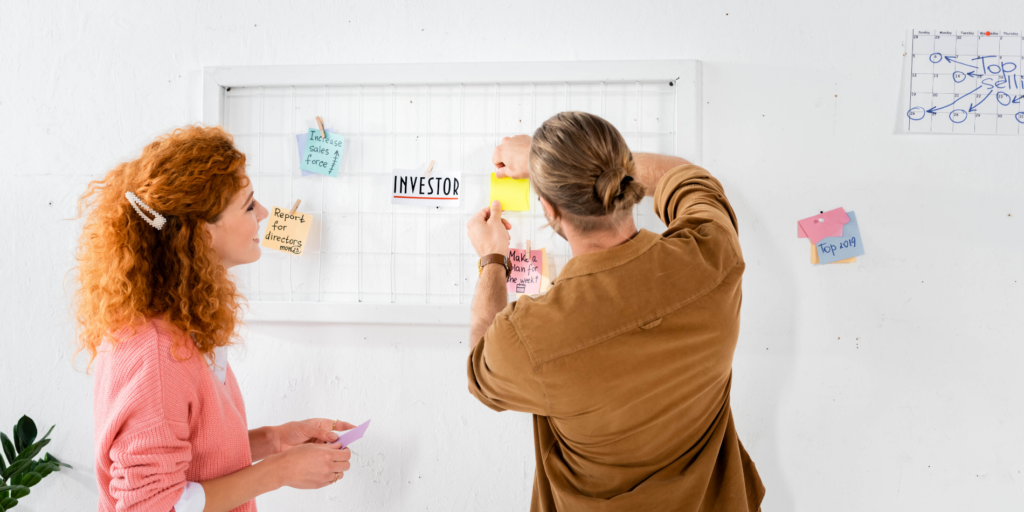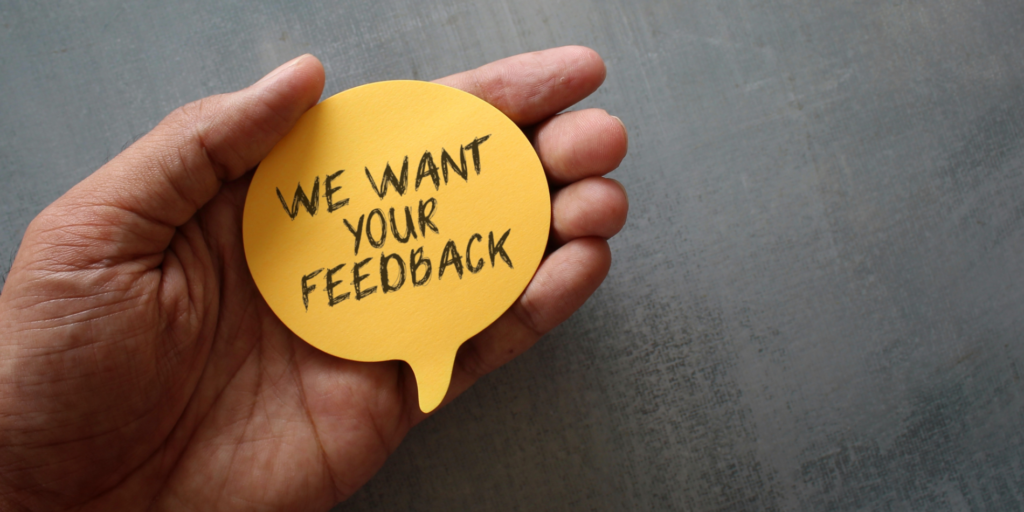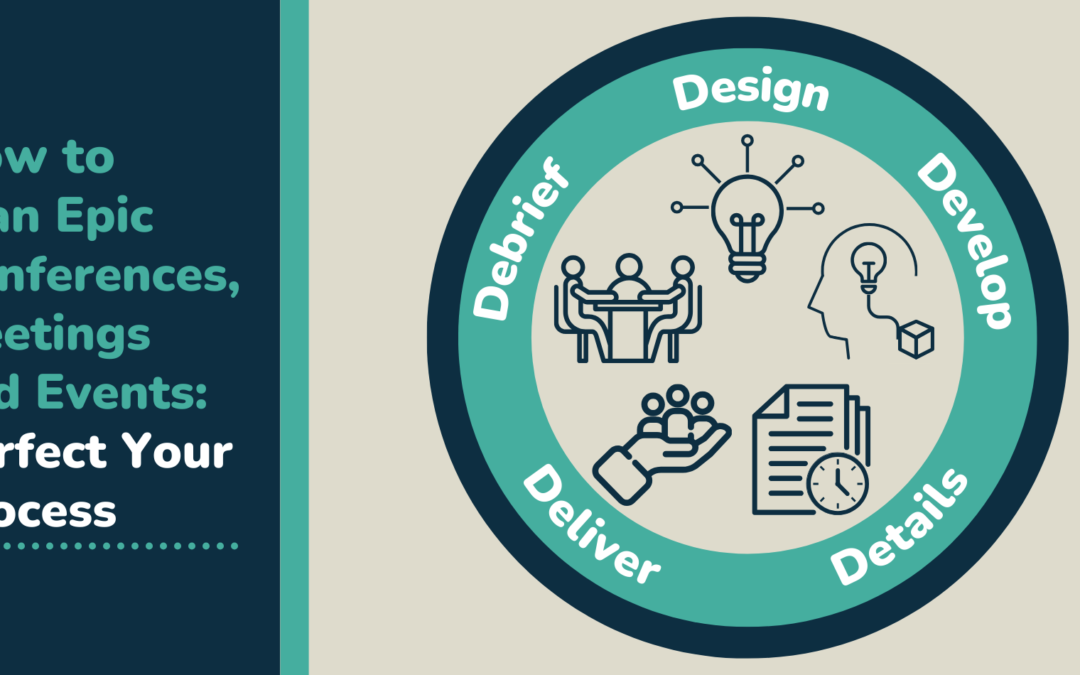Planning an event can be an exhilarating journey, but it’s not for the faint of heart. At Coherent Solutions, we’ve navigated the intricate world of meetings and event planning for years. We’re eager to share valuable insights on transforming your event concept into a seamless and memorable reality. So, grab your coffee, get comfortable, and join us as we delve into the exciting process of organizing an event, which we approach as a structured 5-phase journey. In this blog post, we’ll guide you through the pivotal stages of our systematic approach to event planning.
1. Design
The journey begins with a deep understanding of your event requirements and objectives and its budget.

1.1 Define Your Vision and Objectives
Before you embark on your event planning adventure, take a moment to define your vision and objectives. What’s the purpose of your event? Is it to foster community, create opportunities for collaboration, celebrate a success, or educate your attendees? Understanding the “why” behind your event will guide every decision you make throughout the planning process.
1.2 Create a Budget and Stick to It
One of the most crucial aspects of successful event planning is managing your finances wisely. Develop a detailed budget that includes all potential expenses, from venue costs and catering to decorations and entertainment. Remember, flexibility is critical, but the key to staying within your financial boundaries is proper research and insight. Too often we see clients ‘ballpark’ a key cost such as audio-visual services or shipping costs without proper research or based on pre-pandemic pricing only to be shocked when it later ends up costing significantly more than expected. Our team’s experience can help avoid these budgeting missteps!
1.3 Plan It Out
Event planning and project management have a lot in common – we’d argue that event management is essentially highly specialised project management with the added complexity of a fixed end date. Just like no project manager would embark on a new project without a plan, no event planner should embark on their next event without a critical path of tasks and timelines.
2. Develop
After accomplishing those foundational tasks, the next step is to identify and secure suppliers and vendors, as well as develop schedules and sessions. Recruit speakers, facilitators, and entertainment while ensuring a smooth and bilingual online registration process that is accessible to all. Furthermore, you’ll want to market your event and liaise with sponsors and exhibitors to ensure the fulfilment of sponsorship package details.

2.1 Choose the Perfect Venue
Selecting the right venue is like finding the perfect setting for your story. Consider the size, location, and ambience that aligns with your event’s theme and purpose. Don’t forget to check the availability of the venue on your desired date and ensure it can accommodate your expected number of attendees comfortably. For more details on choosing the perfect venue for your event, check out our blog post from last month: Decoding Event Success: Your Ultimate Guide to Venue Selection.
2.2 Put Together a Compelling Agenda
Why did you gather all these people here anyway? Remember that objective setting you did a little while ago? Make sure it’s what’s driving your decisions and that you build a program of activities that allows your attendees to leave having met those objectives. Make sure you don’t over-schedule people; leave some breathing room for people to connect informally and recharge. If you want people to be focused on your speakers, accept that they will need some time to themselves to check their inboxes at some point in the day.
2.3 Assemble a Fabulous Team of Suppliers
Putting together a proficient team of suppliers is a cornerstone of successful event management, akin to laying the foundation for a sturdy structure. The suppliers you choose play a pivotal role in shaping the overall experience for both organizers and attendees. Collaborating with reliable and experienced suppliers, such as caterers, AV specialists, decor rentals, photographers, and entertainers, fosters trust and efficiency. The synergy among these key suppliers not only brings their individual expertise to the table but also contributes collectively to the creative and logistical aspects of the event.
3. Details
This is what most people consider the fun stuff! What will you serve your attendees? Who’s going to introduce the keynote speaker? What time will the DJ start and how late should the bar stay open? What will people receive as they arrive? Attention to detail is CRI-TI-CAL.

3.1 Feed The Masses
When it comes to feeding a crowd here are some tips to keep in mind:
Format: Choosing a format is all about knowing what vibe you want for the meal. Many people assume that budget is the biggest factor, but in reality, your buffet meal will often not be much less expensive than plated, if at all! Buffets allow your attendees to make their own choices and manage their own time, but are more casual and can be disruptive if you have speakers over lunch. Plated meals provide a more formal, structured meal function and work well for evening functions, but can take a long time and offer fewer choices. Family Style is unexpected which can insert some fun and conversation into your attendees, but can also throw people off.
Menu Choices: Buffets are our go-to’s for breakfasts and lunches. Put yourself in the shoes of a few of your attendees and when you’re looking at a menu, ask yourself, will this person see something:
- Familiar? For guests coming from far away, seeing something at breakfast that you’d expect at home does wonders to start the day.
- Delightful? It’s always a treat to see something on a buffet table that you can’t make yourself at home easily (Mini crème brûlées perhaps? Or a fancy soup?) or something that is just delicious and indulgent (Fudge or ice cream anyone?)
- Local? When people have travelled to your event, they will appreciate the exposure to local cuisines and ingredients.
- Edible? Obviously, your caterer will only produce edible food – but what about those who don’t eat meat, pork, or gluten, or people who require low-calorie diets. The more options you have available on your main buffet that people with common dietary restrictions can access, the happier your crowd will be. Those with dietary requirements will enjoy being able to eat the same thing as everyone else and you will be demonstrating to all of your attendees that you care about their wellbeing and comfort.
If you can answer yes to all of those questions – you’re in good shape!
Hydrate: Make sure people have access to water at all times, but please avoid plastic water bottles. There are so many better options. You can encourage people to bring their refillable water bottles depending on the venue’s facilities for refills. Or you can provide pitchers at all tables or water stations at the sides or back of the room. You should also consider providing constant access to coffee and tea.
3.2 Prepare Your Attendees
Each attendee at your event has finite attention. Do everything in your power to keep their attention where you want it: on your content. A confused or lost attendee is wasting their limited attention on logistics unnecessarily. Worse, a frustrated or uncomfortable attendee is unable to access their creative thinking or problem-solving faculties because too much of their energy is being spent on managing their discomfort. To avoid these situations, spend lots of time and effort preparing your attendees in advance to know what to expect, where to be, and what to bring.
3.3 Time It Out
Get a spreadsheet and time out your event. From the day before (or two) to the final minute. Lay out what’s happening, where, when and who’s responsible for what. What’s being said? What’s being served? What’s being shown on the screen? No detail is too small to include in this key document. This may seem tedious at first, but you’ll be surprised how valuable this practice is to create the perfect flow for your event.
4. Deliver
Your event is here! The joy – and sometimes stress – of event management is that your deadline is unmovable. “Ready or not – here it is!”

4.1 A Warm Welcome
Streamline the registration process to ensure a smooth check-in on the day of the event. Utilize online registration platforms in advance that gather everything you need and provide clear instructions for attendees. A well-organized check-in process sets a positive tone from the beginning.
4.2 Follow-Through
Effective oversight and leadership are indispensable components in the successful execution of any event. Onsite, it becomes paramount to hold each supplier accountable for the promises made during the planning phase. The role of oversight involves not only ensuring that each component aligns with the agreed-upon vision but also requires the flexibility to adapt to unforeseen circumstances. A delicate balance must be struck between maintaining high standards and allowing room for creative adjustments. Leaders in event management must foster an environment of collaboration and accountability, encouraging suppliers to uphold their commitments while also providing the grace necessary to navigate the dynamic nature of live events.
4.3 Prepare for the Unexpected
No matter how meticulous your planning is, surprises are bound to happen. Prepare for unforeseen circumstances by having a contingency plan – or two – in place. Quick thinking and adaptability will be your best allies when handling the unexpected.
4.4 Smell the Roses
Amidst the whirlwind of executing your well-planned event, it is essential to pause, savour the moment, and reflect on the collective feat accomplished!
5. Debrief
If you thought you were done – not quite. This step is critical to ensure that all that work you just put in is not only successful in the execution of the event you just ran, but also informs your future work. We like to conduct, at a minimum, a simple “Stop/Start/Continue” survey with our team and with our clients.

5.1 Stop
What didn’t go as we’d hoped? Where were efforts wasted? Understanding these areas is key to preventing similar challenges in future events.
5.2 Start
What would we do next time that we didn’t do this time? This is where you learn from experience, turning challenges into opportunities for improvement.
5.3 Continue
What did we knock out of the park? Identify the winning elements that can be applied to future events, ensuring a continuous cycle of improvement.
As you wrap up your journey from the initial concept to the grand execution of your event, it’s clear that event planning is indeed an art that requires a blend of creativity, meticulous organization, and a touch of resilience. At Coherent Solutions, we’ve been through the highs and lows of event planning, and we hope this step-by-step guide has provided you with valuable insights to navigate your own event planning adventure successfully.
But hey, if you’re feeling overwhelmed or just want to kick back and enjoy the event without the stress, why not consider partnering with our conference and meeting planning firm? We can take care of your entire event or handle only the portions you feel you don’t have the time or expertise to take on yourself.
Here’s to your successful event-planning journey – may it be filled with clever problem-solving, happy attendees, and only happy surprises!

